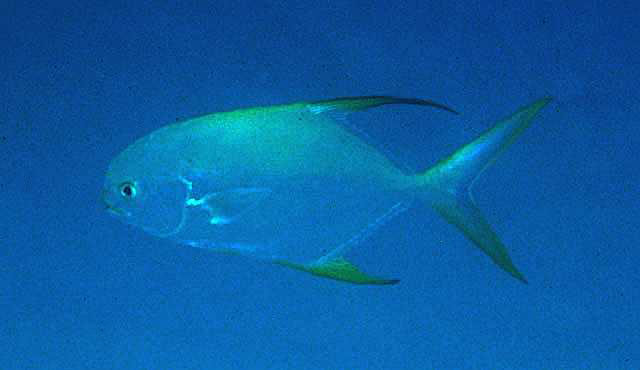| Carangidae (Jacks and pompanos), subfamily: Trachinotinae |
| 110 cm FL (male/unsexed); max.weight: 3,400.0 g |
|
reef-associated; brackish; marine; depth range 1 - 7 m |
| Indo-Pacific: Red Sea and East Africa (Ref. 3287) to the Marshall Islands and Samoa, north to southern Japan, south to Australia. |
|
Dorsal spines (total): 7-7; Dorsal soft rays (total): 18-20; Anal spines: 3-3; Anal soft rays: 16-18. Description: Dorsal side silvery blue grey, ventrally paler; large adults golden orange, especially snout and ventral half of body. Dorsal snout profile very steep and broadly rounded. Fins dorsal greater than anal, soft-rays greatly elevated, spines embedded and inconspicuous in large adult; caudal strongly forked, caudal peduncle grooves absent. (Ref. 2334, 90102) |
| Juveniles inhabit sandy shorelines and shallow sandy or muddy bays near river mouths while adults move out in schools to clear seaward coral and rock reefs (Ref. 5213). Juveniles are in small schools, while adults are usually solitary (Ref. 48635). Adults feed primarily on sand mollusks and other hard-shelled invertebrates (Ref. 9710). |
|
Least Concern (LC); Date assessed: 09 March 2015 Ref. (130435)
|
| reports of ciguatera poisoning |
|
Also Ref. 3280, 121724. |
Source and more info: www.fishbase.org. For personal, classroom, and other internal use only. Not for publication.

